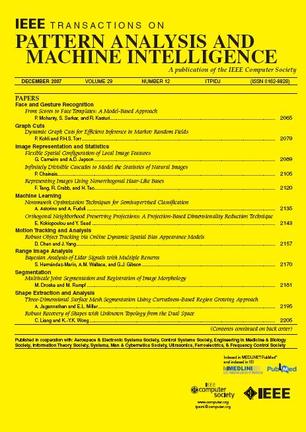StudioGAN: A Taxonomy and Benchmark of GANs for Image Synthesis
IF 20.8
1区 计算机科学
Q1 COMPUTER SCIENCE, ARTIFICIAL INTELLIGENCE
IEEE Transactions on Pattern Analysis and Machine Intelligence
Pub Date : 2022-06-19
DOI:10.48550/arXiv.2206.09479
引用次数: 28
Abstract
Generative Adversarial Network (GAN) is one of the state-of-the-art generative models for realistic image synthesis. While training and evaluating GAN becomes increasingly important, the current GAN research ecosystem does not provide reliable benchmarks for which the evaluation is conducted consistently and fairly. Furthermore, because there are few validated GAN implementations, researchers devote considerable time to reproducing baselines. We study the taxonomy of GAN approaches and present a new open-source library named StudioGAN. StudioGAN supports 7 GAN architectures, 9 conditioning methods, 4 adversarial losses, 12 regularization modules, 3 differentiable augmentations, 7 evaluation metrics, and 5 evaluation backbones. With our training and evaluation protocol, we present a large-scale benchmark using various datasets (CIFAR10, ImageNet, AFHQv2, FFHQ, and Baby/Papa/Granpa-ImageNet) and 3 different evaluation backbones (InceptionV3, SwAV, and Swin Transformer). Unlike other benchmarks used in the GAN community, we train representative GANs, including BigGAN and StyleGAN series in a unified training pipeline and quantify generation performance with 7 evaluation metrics. The benchmark evaluates other cutting-edge generative models (e.g., StyleGAN-XL, ADM, MaskGIT, and RQ-Transformer). StudioGAN provides GAN implementations, training, and evaluation scripts with the pre-trained weights. StudioGAN is available at https://github.com/POSTECH-CVLab/PyTorch-StudioGAN.StudioGAN:用于图像合成的gan的分类和基准
生成对抗性网络(GAN)是最先进的真实感图像合成生成模型之一。虽然训练和评估GAN变得越来越重要,但当前的GAN研究生态系统并没有提供可靠的基准,无法持续、公平地进行评估。此外,由于很少有经过验证的GAN实现,研究人员投入了大量时间来复制基线。我们研究了GAN方法的分类,并提出了一个新的开源库,名为StudioGAN。StudioGAN支持7种GAN架构、9种条件化方法、4种对抗性损失、12个正则化模块、3个可微扩充、7个评估度量和5个评估骨干。通过我们的训练和评估协议,我们使用各种数据集(CIFAR10、ImageNet、AFHQv2、FFHQ和Baby/Papa/Granpa ImageNet)和3个不同的评估骨干(InceptionV3、SwAV和Swin Transformer)提出了一个大规模的基准。与GAN社区中使用的其他基准不同,我们在统一的训练管道中训练具有代表性的GAN,包括BigGAN和StyleGAN系列,并用7个评估指标量化生成性能。该基准评估其他尖端生成模型(例如StyleGAN XL、ADM、MaskGIT和RQ Transformer)。StudioGAN为GAN的实现、训练和评估脚本提供了预先训练的权重。StudioGAN可在https://github.com/POSTECH-CVLab/PyTorch-StudioGAN.
本文章由计算机程序翻译,如有差异,请以英文原文为准。
求助全文
约1分钟内获得全文
求助全文
来源期刊
CiteScore
28.40
自引率
3.00%
发文量
885
审稿时长
8.5 months
期刊介绍:
The IEEE Transactions on Pattern Analysis and Machine Intelligence publishes articles on all traditional areas of computer vision and image understanding, all traditional areas of pattern analysis and recognition, and selected areas of machine intelligence, with a particular emphasis on machine learning for pattern analysis. Areas such as techniques for visual search, document and handwriting analysis, medical image analysis, video and image sequence analysis, content-based retrieval of image and video, face and gesture recognition and relevant specialized hardware and/or software architectures are also covered.

 求助内容:
求助内容: 应助结果提醒方式:
应助结果提醒方式:


